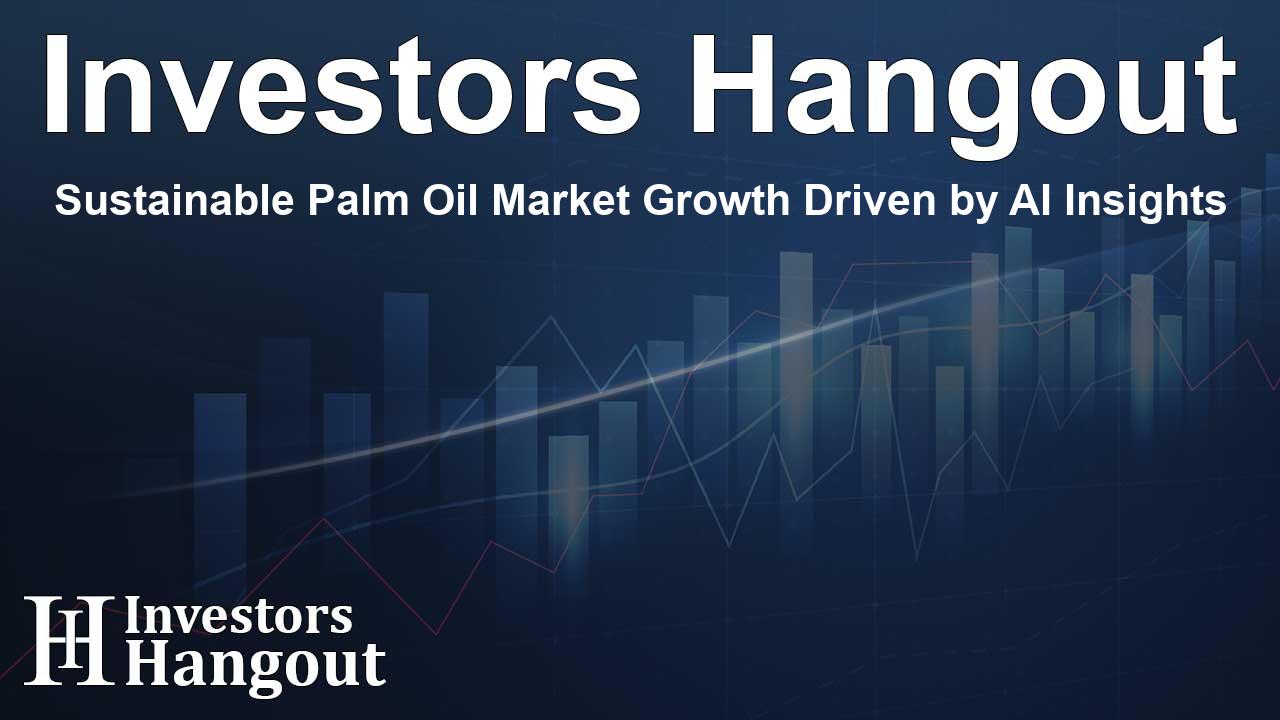Sustainable Palm Oil Market Growth Driven by AI Insights

Understanding the Sustainable Palm Oil Market Growth
The sustainable palm oil market is currently experiencing a significant rise, driven by a growing demand for trans-fat-free products and advancements in eco-friendly farming practices. This growth is projected to reach approximately USD 2.75 billion by the year 2028, reflecting a strong compound annual growth rate (CAGR) of about 5.24% during the forecast period. Consumers are increasingly preferring products that not only deliver quality but are also sourced sustainably, pushing businesses to adapt accordingly.
Key Factors Driving Market Demand
One of the main drivers behind this market surge is the changing consumer preference toward healthier food alternatives, particularly those free from trans fats. Companies are recognizing the need to align their offerings with these preferences, emphasizing the significance of sustainable palm oil. The market is also being shaped by cutting-edge innovations powered by artificial intelligence (AI), which provide insights into consumer behavior and trends. This technology allows businesses to stay ahead by optimizing their supply chains and marketing strategies.
Sustainable Cultivation Methods
The implementation of sustainable cultivation methods is another pivotal factor that contributes to the market's growth. Agroforestry practices, for instance, are being adopted widely. This approach integrates palm oil farming with a variety of tree species, promoting biodiversity and resilience within the ecosystem. Advances in precision agriculture technologies have also emerged, utilizing tools such as drone monitoring to improve overall efficiency and resource management.
Challenges Facing the Market
Despite the positive trajectory, the sustainable palm oil market faces several challenges. The availability of substitutes, such as vegetable oils like sunflower and soybean oil, have increased competition. These alternatives are often perceived as more environmentally friendly, impacting the demand for palm oil. As consumers become more aware of sustainable practices and the environmental impacts of palm oil production, businesses must navigate these challenges carefully.
Environmental Concerns
The environmental implications of palm oil production cannot be overlooked. Deforestation and habitat destruction are pressing concerns, contributing to the decline of biodiversity and climate change issues. Products sourced from sustainable palm oil farms seek to mitigate these concerns by ensuring responsible sourcing that protects ecosystems. Certification programs, such as those from the Roundtable on Sustainable Palm Oil (RSPO), are gaining traction, encouraging consumers to select certified products.
Market Segmentation and Trends
The sustainable palm oil market is widely segmented by various factors including type, distribution channel, and geographic region. The key segments include edible oils, surfactants, biofuels, and others. Retail channels have played a crucial role, with both offline and online sales witnessing substantial growth. It’s essential for manufacturers to understand these segments for effective market penetration.
The Role of Technology in Market Innovation
Technology, particularly artificial intelligence, plays a vital role in driving market innovation. AI helps in identifying trends and consumer preferences, which can radically transform product offerings and marketing strategies in the sustainable palm oil segment. Businesses leveraging AI can develop more effective environmental practices and improve efficiency in production and distribution.
Conclusion: The Future of Sustainable Palm Oil
The future of the sustainable palm oil market looks promising, bolstered by increasing awareness and demand for healthier, sustainable products. Companies are urged to commit to ethical sourcing and production practices to not only cater to consumer demands but also contribute to environmental stewardship. With continued advancements in technology and cultivation methods, coupled with heightened consumer expectations, the market is poised for further growth.
Frequently Asked Questions
What is the expected growth rate of the sustainable palm oil market?
The sustainable palm oil market is projected to grow at a CAGR of approximately 5.24% from 2024 to 2028.
What factors are driving the demand for sustainable palm oil?
Key factors include increasing consumer preference for trans-fat-free products, advancements in eco-friendly farming, and the influence of AI on market insights.
What challenges does the sustainable palm oil market face?
The market encounters challenges from the availability of substitute oils, as well as environmental concerns linked to palm oil production.
How is technology impacting the sustainable palm oil market?
Technology, particularly AI, provides businesses with critical insights into consumer preferences and behaviors, enabling better decision-making and efficiency.
What are the main segments of the sustainable palm oil market?
The market is segmented into categories like edible oils, surfactants, and biofuels, as well as by distribution channels and geographic regions.
About Investors Hangout
Investors Hangout is a leading online stock forum for financial discussion and learning, offering a wide range of free tools and resources. It draws in traders of all levels, who exchange market knowledge, investigate trading tactics, and keep an eye on industry developments in real time. Featuring financial articles, stock message boards, quotes, charts, company profiles, and live news updates. Through cooperative learning and a wealth of informational resources, it helps users from novices creating their first portfolios to experts honing their techniques. Join Investors Hangout today: https://investorshangout.com/
Disclaimer: The content of this article is solely for general informational purposes only; it does not represent legal, financial, or investment advice. Investors Hangout does not offer financial advice; the author is not a licensed financial advisor. Consult a qualified advisor before making any financial or investment decisions based on this article. The author's interpretation of publicly available data shapes the opinions presented here; as a result, they should not be taken as advice to purchase, sell, or hold any securities mentioned or any other investments. The author does not guarantee the accuracy, completeness, or timeliness of any material, providing it "as is." Information and market conditions may change; past performance is not indicative of future outcomes. If any of the material offered here is inaccurate, please contact us for corrections.